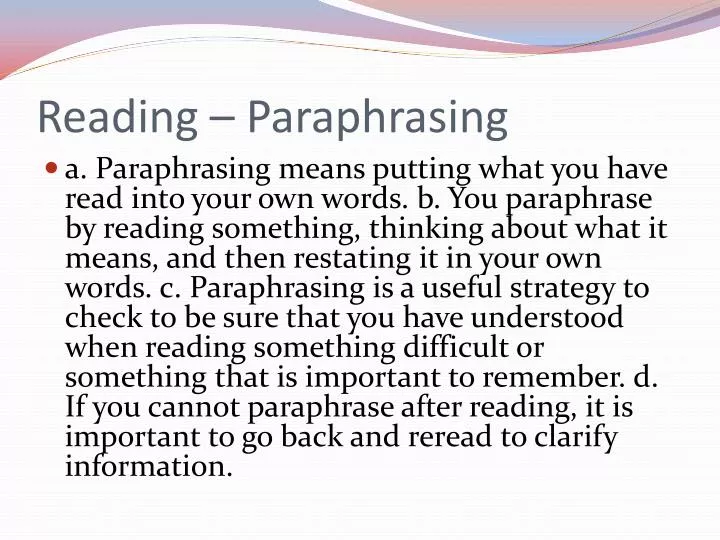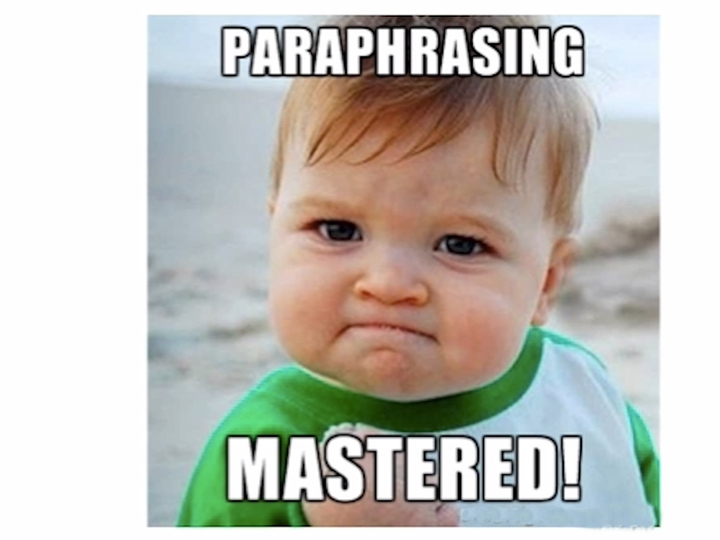

Readers must remain engaged with their work and draw back on their own thoughts in order to understand what they read.

Paraphrasing is necessary for any student to know. The different styles (MLA, APA, Chicago etc) require different citations processes for paraphrased material. Wind up the entire process by following the citation style requested by your professor. Otherwise, you’d have gone through all of this trouble for nothing and end up accused of plagiarism. But you are also making sure it’s in sufficiently different words.ĭo not forget to include your citations. You are ensuring that you’ve kept the original idea. This stage is about dotting your i’s and crossing your t’s. Once you’ve done this, it’s on to the revision process. You want to rephrase the content sufficiently in your own words, but you also want to keep the original meaning.

This is to ensure you’ve accurately captured the original idea.Ī balance must be struck here. At this stage of the 4 r’s of paraphrasing process, you check back against the original text.

You’ve made your list of paraphrased points, and now you’re checking it twice. That a different kind of academic mistake. When you restate, be careful not to do paraphrase quotes from the text and put your rephrased words as the author’s quote. You can also keep the main idea, while introducing new ones of your own. To keep the author’s original intent, there are several things you can do.įor example, you can structure there words differently, using synonyms. The best paraphrasing in your work takes the meaning of the original sentence and places it in your own words. This often goes wrong, as the author’s words are significantly different than the ones you replaced. Spinning is when you mold an author’s words so that they say what you want to say, instead of what they originally said. As far as possible, you don’t want to spin. Once you have a handle on what the author is saying, you can begin to rewrite. Sometimes, essays come with limits as to the number of quotes you can include. However, others like large chunks of facts and figures are best paraphrased. Things like dialogue and poetry are always best quoted. Once you identify the main points, you can begin to put them in your own words.Ĭertain parts of the text do not need to be paraphrased. Do your best to understand what the author is saying here.Įach bit of text will have a main point. Instead, find the points that support your argument. Here are some ways you can do that:ĭon’t try to paraphrase large parts of the text. If you don’t understand what the author is saying, you won’t be able to put it into your own words. This is the first of the 4 r’s of paraphrasing.Įvery bit of text has a message it wants you to convey. This is a key component of good academic writing that cannot be overlooked. The difference is, this is done in your own words. It is the process of recreating the author’s original words, ideas, and thoughts. Paraphrasing is one of the methods you can use to prevent plagiarism.


 0 kommentar(er)
0 kommentar(er)
